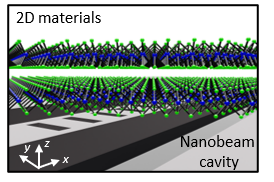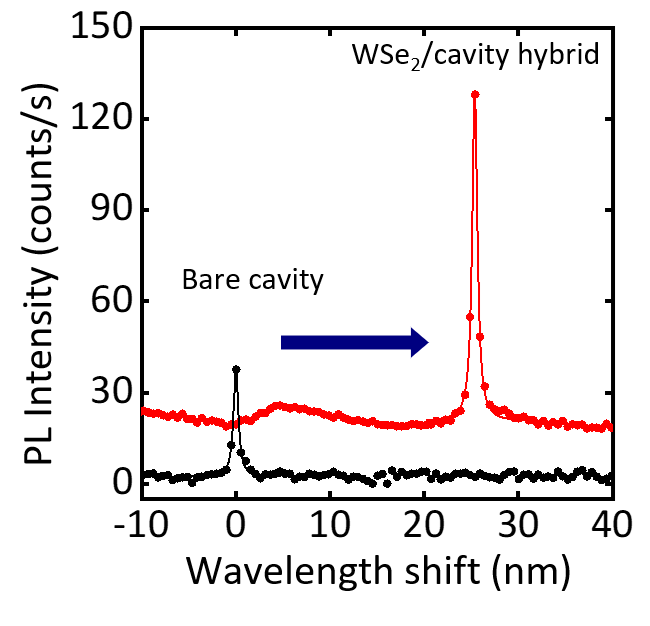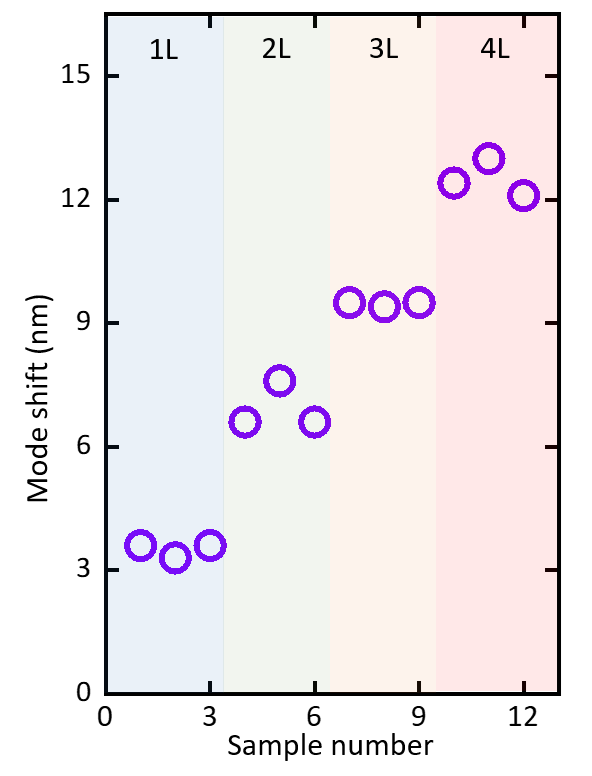Research:Quantization of mode shifts in nanocavities integrated with atomically thin sheets
Two-dimensional (2D) layered materials such as graphene, transition metal dichalcogenides (TMDs), and hexagonal boron nitride have attracted considerable attention due to their exotic physical properties and potential for diverse applications. With atomically precise thickness over macroscopic areas and extensive compatibility offered by van der Waals interface, photonic devices controlled through single atomic layers would present a new direction in nanotechnology. It is however challenging to control the microcavities by TMDs, and the cavity modes are barely affected.
Here we specially design the nanobeam cavity to be the air mode to enhance the interaction with 2D materials. We fabricate the nanobeam cavity from a silicon-on-insulator substrate using electron beam lithography and inductively-coupled plasma etching. Tungsten diselenide (WSe2) flakes are then transferred on the cavities using a polymer stamp method.

The interaction with the 2D material is evaluated with a home-built confocal photoluminescence microscopy system at room temperature by comparing the fundamental mode before and after the transfer of WSe2. A single sharp peak is observed in the spectrum and is identified as the fundamental mode. The air-mode cavity shows a redshift of 26.0 nm after the transfer, which is attributed to a change in the average dielectric constant. The large shift indicates the enhanced responsivity for the air mode cavities, consistent with the simulations showing strong fields within the WSe2 flake.

By controlling the thickness of WSe2 flakes with atomic precision, we demonstrate extreme sensitivity down to the monolayer limit. The wavelength shift decreases by 3 nm as the thickness of WSe2 is reduced layer by layer. We observe the clear resolved steps, indicating that the mode shifts are indeed quantized.

To learn more about this work, please refer to
Quantization of mode shifts in nanocavities integrated with atomically thin sheets
Adv. Opt. Mater.
10, 2200538 (2022).
![]()